What Is the State Insect of North Carolina? How Was It Decided?
-
Lindsey Lawson
- Last updated:
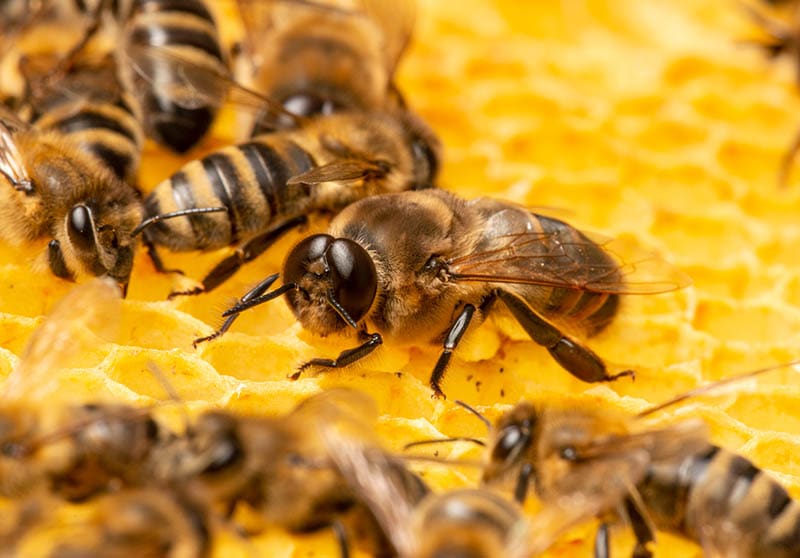
North Carolina is known for its stunning natural landscape. Not only is it home to breathtaking mountains but you will also find some of the most beautiful coastlines the country has to offer. From the pine tree to the Carolina lily, the state symbols of the Tar Heel state truly capture the natural beauty of this unique and stunning coastal state.
The honeybee (Apis mellifera) was chosen as the state insect in 1973. Undoubtedly one of the most popular and productive insects in the country, the honeybee has been named the state insect of many other states, too. In this article, we’ll talk more about these impressive little creatures that play such an important role in our world and why they make such popular state symbols across the nation.
How the Honeybee Became the State Insect of North Carolina
The North Carolina General Assembly named the honeybee the official state insect of North Carolina in 1973. This decision was made because these bees provide pollination for a variety of plants across the state and contribute to agricultural production.
In addition to essential pollination, honeybees also provide honey and wax, which are also heavily enjoyed throughout the state. Unfortunately, the number of honeybees in North Carolina and throughout the world has been plummeting steadily since the 1980s.
North Carolina isn’t the only place where the honeybee provides a vital role in crop production, which is why it has been named the state insect of several other states. While they aren’t the state insects of Texas or Tennessee, they still hold symbolism in these states too. In Texas, they have been named the official state pollinator and in Tennessee, they are the state agricultural insect.
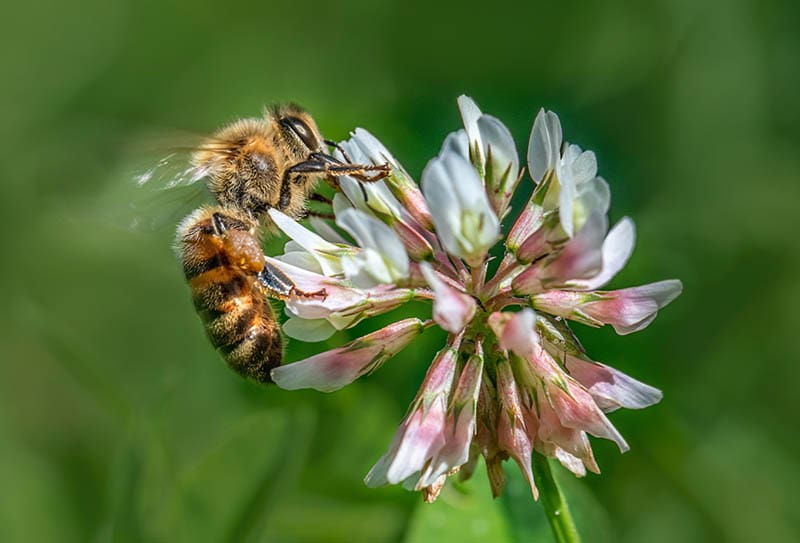
States That Recognize the Honeybee as the Official State Insect
- Arkansas (1973)
- Georgia (1975)
- Kansas (1976)
- Kentucky (2010)
- Louisiana (1977)
- Maine (1975)
- Mississippi (1980)
- Missouri (1985)
- Nebraska (1975)
- New Jersey (1974)
- Oklahoma (1992)
- South Dakota (1978)
- Tennessee (1990)
- Utah (1983)
- Vermont (1978)
- West Virginia (2002)
- Wisconsin (1977)
The Honeybee
| Species: | Apis mellifera |
| Size: | 9-20mm |
| Diet: | Nectar, pollen |
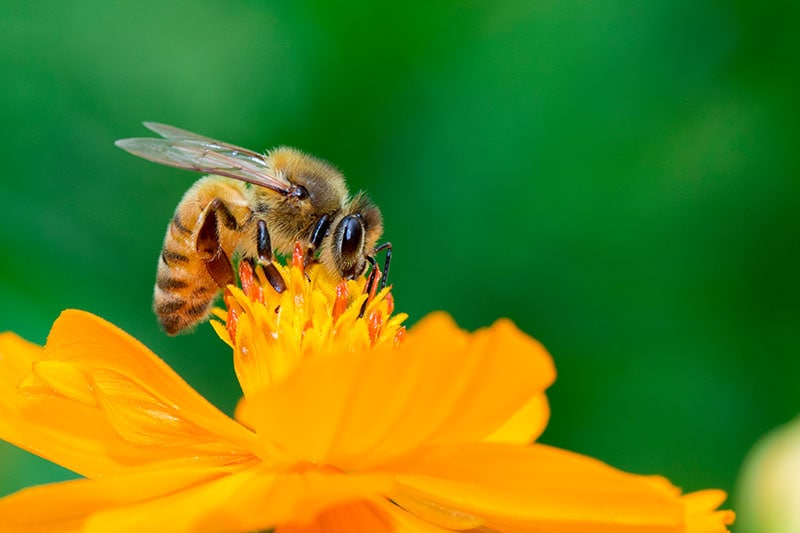
Bees date back as far as 40 million years ago from fossil records and remain unchanged both physically and socially for at least the last 30 million years. While there are more than 20,000 species of bee found throughout the world, only 5% are considered social.
The honeybee is not a native North American species. They are believed to have originated from the African tropics but made their way to the states by way of imports from Europe.
It is believed the settlers wanted the bees to accompany them to the new world during the 17th century to produce honey, and wax, and assist in the pollination of crops.
Bees first arrived in the eastern United States in 1622 but it took an additional 200 years before they reached the west coast. They were first described in California in 1853.
Appearance
The honeybee is known for its thick, dark body and distinct yellow stripes. They have an oval-shaped body that is covered in both branched and unbranched hairs that work for sensory and pollen removal.
They have six legs, wings, antennae, and barbed stingers that inject venom into the victim but also result in a brutal death to the bee if released.
The primary difference between the honeybee and other bees and wasps is the shape of the thorax and abdomen. Honeybees have a barrel shape and lack the thin midsection between the thorax and abdomen, which is seen in wasps and other types of bees.
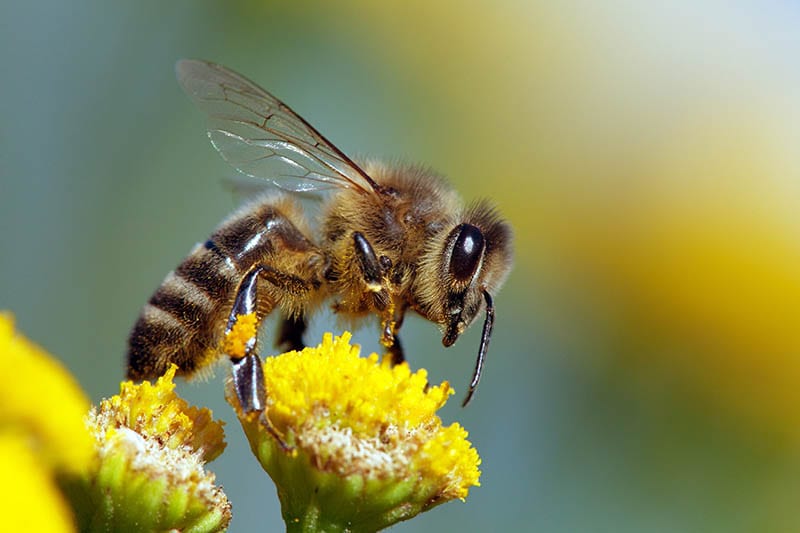
Habitat and Behavior
Honeybees make their home in a variety of natural habitats and are also commonly kept in domestic environments. In the wild, they are often observed by humans in gardens, orchards, meadows, forests, and any area that is dense in flowering plants.
Hives are constructed in the cavities of hollow trees and logs but human structures are also up for grabs if they can support the hive. The colonies range in size from 20,000 to 80,000 bees while commercial hives typically remain around 20,000 or less.
Diet
The worker bee’s job is to collect pollen and nectar from local flowering plants. Once they’ve collected their fill, they store it in their honey sack and then return to the hive. Once back in the hive, they will regurgitate their stores and pass them along to other bees in the colony.
Once the honey is made from the nectar, it will be stored in cells and used to feed larvae and other members of the colony.
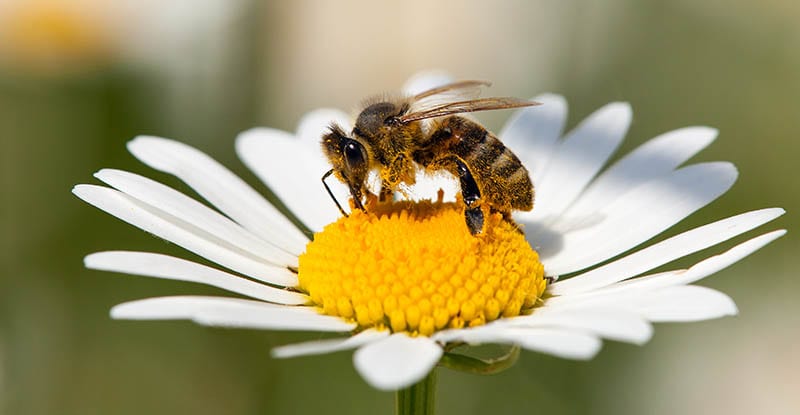
Life Cycle
A honeybee’s lifecycle is broken down into four stages: egg, larva, pupae, and adult. The length of the life cycle will vary according to the type of bee in question. The bees are broken down into three categories: queen, worker, and drone.
Queen bees will lay 2,000 to 3,000 eggs per day in the hive’s cells. Her fertilized eggs will develop into female honeybees, which are the worker bees. Her unfertilized eggs become drones, which are male bees. The key differences between each bee type occur during the larval stage.
During the pupa stage, the bee will have developed wings, eyes, legs, and small hairs and will look very much like your traditional adult bee. Once they reach full maturity, they are considered adults and will chew their way out of the security of the cell.
The time it takes to transition from an egg to an adult takes approximately 16 days for queen bees, 18 to 22 days for worker bees, and 24 days for drones. Queens ten to live 1 to 2 years, worker bees live around 15 to 38 days during summer and up to 200 days during the wintertime, while drones typically don’t survive more than 55 days total.
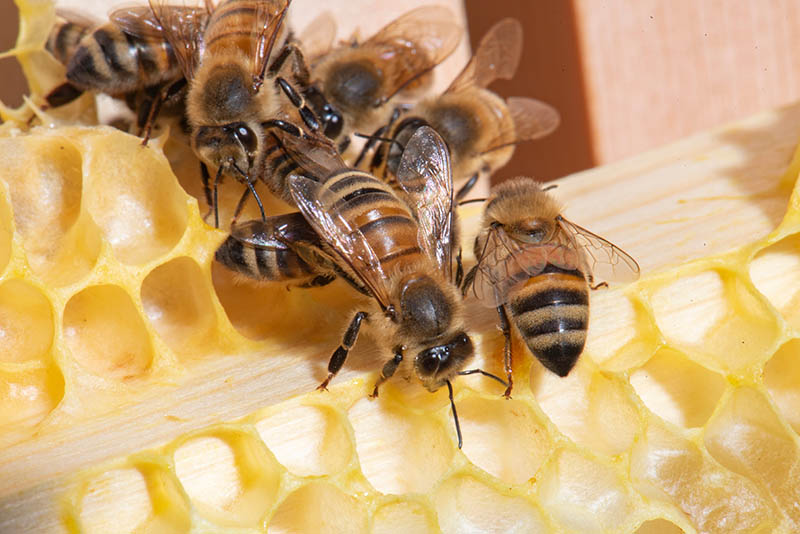
The Importance of Honeybees in Agriculture
Pollination is key in the reproductive process of many flowering plants. The transfer of pollen allows the plants to properly reproduce. Bees aren’t the only means of pollination, it can also occur through precipitation, birds, bats, and a variety of other insects.
Honeybees play a significant part in the financial agricultural benefit of the nation. The money brought in from agriculture is estimated to exceed 10 to 20 times the value of honey and beeswax combined. Pollination may occur in several ways, but bees are so vital to the process that they account for up to 15 billion dollars in added crop value.
 Conclusion
Conclusion
The honeybee was named the official state insect of North Carolina in 1973 because these bees play an important role in the pollination of plants across the state. This is highly beneficial to North Carolina’s agricultural production and also many other states, which is why these bees are very popular state symbols across the nation.
- Related Read: 15 Most Common Types of Butterflies in North Carolina
See also:
Featured Image Credit: Kuttelvaserova Stuchelova, Shutterstock
Contents
